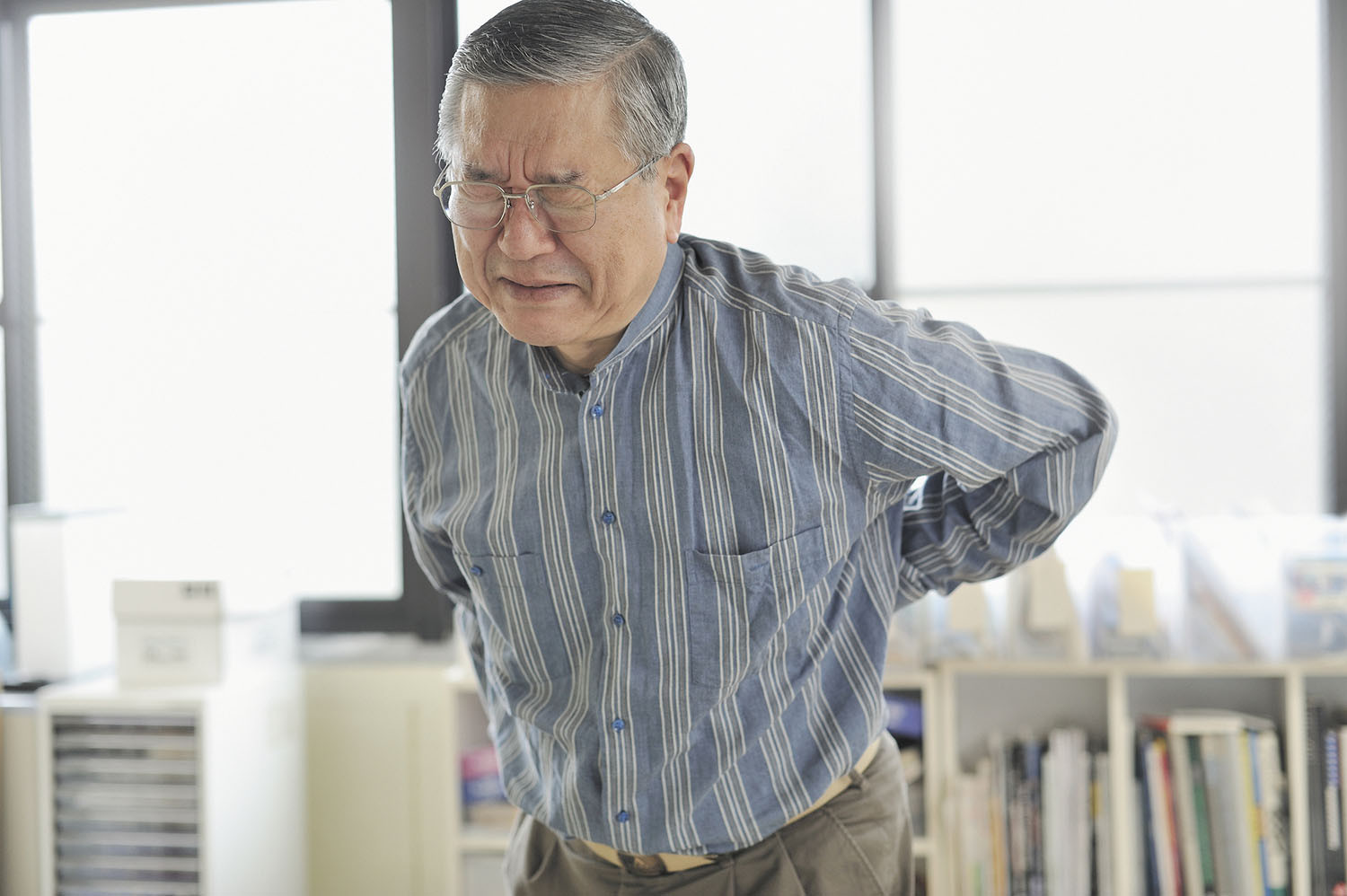Stopping pain before it turns chronic
Most people experience acute pain, but ignoring persistent or severe symptoms and not seeking treatment can allow it to progress to a chronic state.
- Reviewed by Howard E. LeWine, MD, Chief Medical Editor, Harvard Health Publishing; Editorial Advisory Board Member, Harvard Health Publishing

A not-so-favorite game played by many older adults is "pain of the day," where they share what currently hurts and how much.
Most often, new aches, known as acute pain, are short-term and go away on their own or diminish with a combination of rest and over-the-counter remedies. But sometimes, acute pain persists and worsens until it becomes a serious chronic pain.
"People may shrug off the occasional acute pain as the price of advancing age and learn to live with it," says Dr. Edgar Ross, senior clinician of the Pain Management Center at Harvard-affiliated Brigham and Women's Hospital. "But ignoring any level of pain often leads to greater problems that become difficult to treat and manage."
Pain names
Most acute pain comes from damage to body tissues. It's known as nociceptive pain and results from physical trauma like a sports or exercise injury, a broken bone, a medical procedure, or a household accident like stubbing your toe, cutting a finger, or bumping into something. The pain can feel sharp, aching, or throbbing and often heals within a few days to a few weeks.
In comparison, chronic pain lasts at least two to three months, often long after you have recovered from the injury or illness, and may even become permanent. Symptoms and severity of chronic pain vary and may include a dull ache, shooting, burning, stabbing, or electric shock–like pain and sensations like tingling and numbness.
Chronic pain can be related to ongoing tissue injuries or inflammation, as with arthritis. However, more often long-lasting pain signals originate in the brain even when nociceptive pain has resolved. The brain itself has been rewired to experience pain even when there is no active involvement from body tissues.
According to the CDC, 20% of adults have chronic pain — with people ages 65 and older affected the most — and 7.4% experience chronic pain that limits their activities.
Seeking help
Sometimes acute pain becomes chronic because not enough attention was given to addressing the problem early on. "People feel they can live with it, or they adjust their lifestyle to accommodate the pain, so they don't get appropriate treatment," says Dr. Ross.
Another barrier is psychological. "Sometimes people need regular movement, exercise, or physical therapy as part of their acute pain treatment, but because it may hurt or be uncomfortable to do, they avoid it, which can worsen their condition," says Dr. Ross.
Avoiding treatment and allowing acute pain to linger also may make people more sensitive to pain. "This makes their pain feel worse than it is and makes it harder for people to cope," says Dr. Ross.
The best way to stop acute pain from becoming chronic is to confront it straight on. "Don't ignore it. Seek medical advice, and follow proper pain management, whether that's heat and ice therapy, physical therapy, medication, rest, or some combination," says Dr. Ross. "The longer your acute pain lingers without proper treatment, the more likely it could become chronic."
Individual treatment
Chronic pain can be difficult to reverse, and sometimes even impossible, in which case the goal may be to restore function, manage flare-ups, or reduce symptoms.
Of course, every treatment strategy depends on the person's medical history, the source of the chronic pain, and its severity. A traditional course of action is to work with a pain specialist to devise an individualized treatment plan. This could include a combination of options like prescription pain medication, steroid injections, physical therapy, complementary treatments, and behavioral therapy.
Sometimes a psychological evaluation is recommended. Chronic pain can be traumatizing and cause depression and anxiety that must be addressed. There also could be personal stressors that exacerbate chronic pain, like relationship issues or financial problems.
"It is not easy sharing personal issues, but exploring them can support and improve your treatment and management strategy," says Dr. Ross.
Addressing chronic pain takes time and dedication. Depending on how long the pain has been around, therapy could last several months or even years. "Even so, dealing with chronic pain is not a hopeless situation," says Dr. Ross. "There are many options to help people improve their quality of life."
Image: © Yagi Studio/Getty Images
About the Author

Matthew Solan, Executive Editor, Harvard Men's Health Watch
About the Reviewer

Howard E. LeWine, MD, Chief Medical Editor, Harvard Health Publishing; Editorial Advisory Board Member, Harvard Health Publishing
Disclaimer:
As a service to our readers, Harvard Health Publishing provides access to our library of archived content. Please note the date of last review or update on all articles.
No content on this site, regardless of date, should ever be used as a substitute for direct medical advice from your doctor or other qualified clinician.













